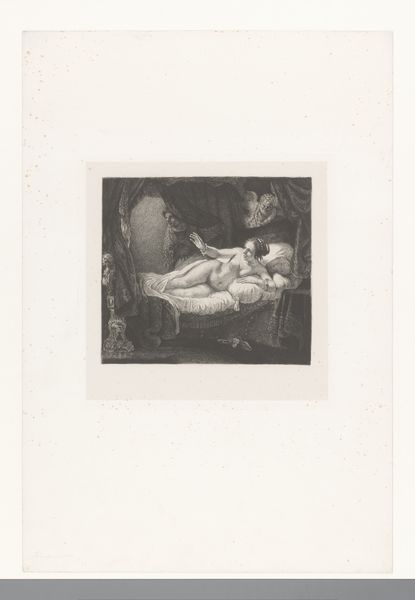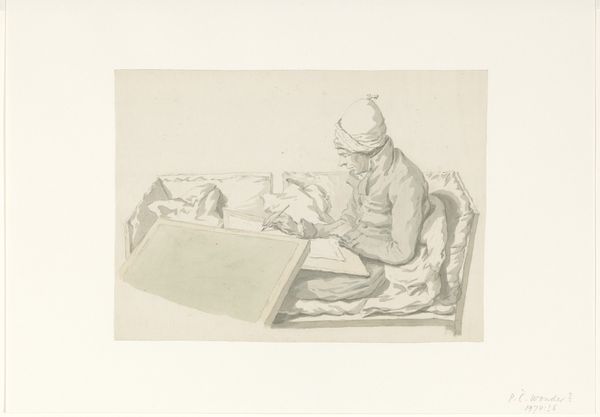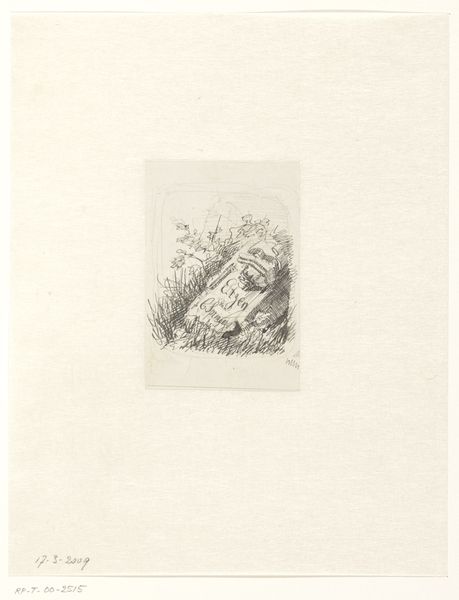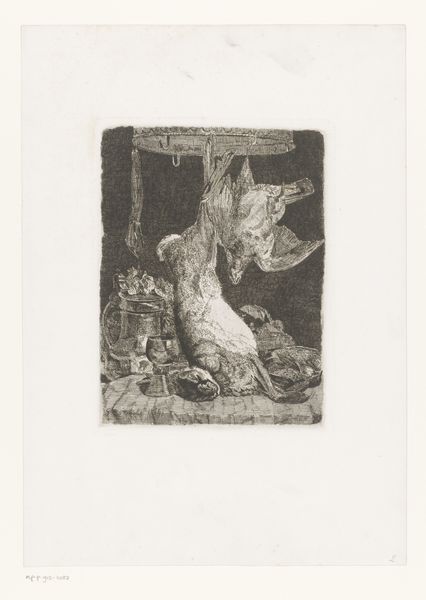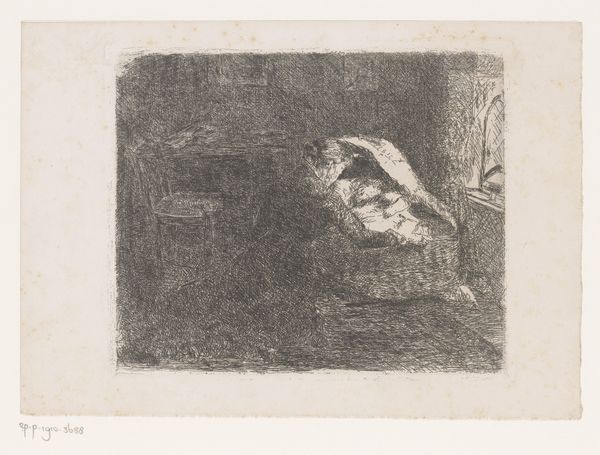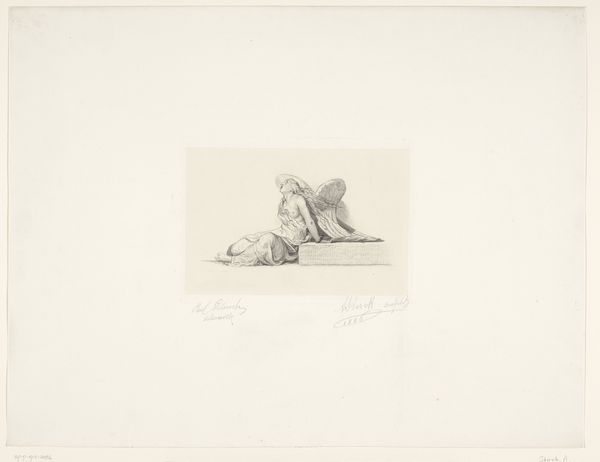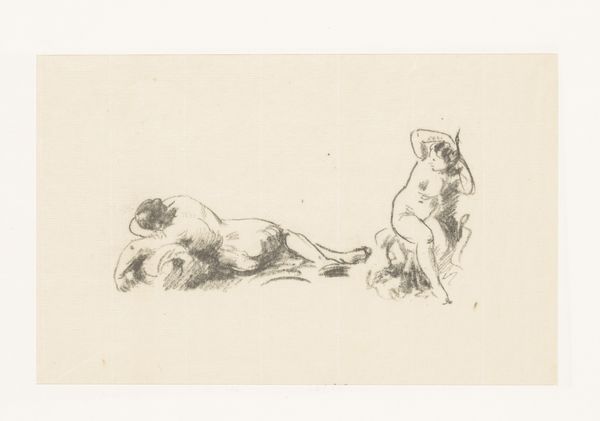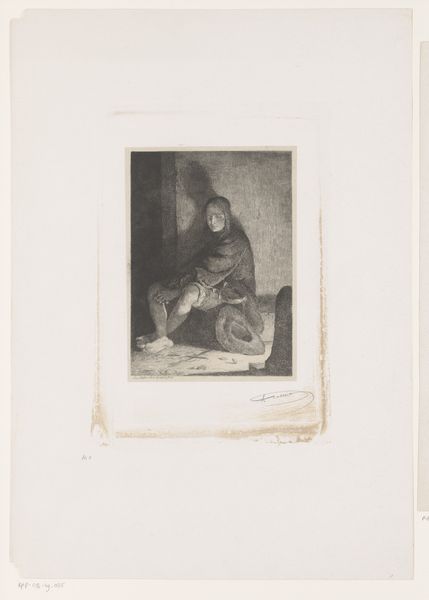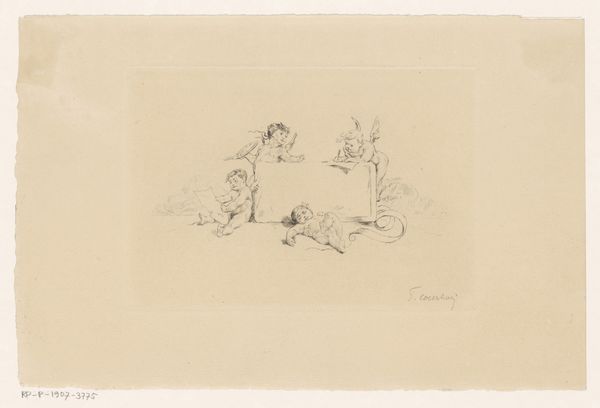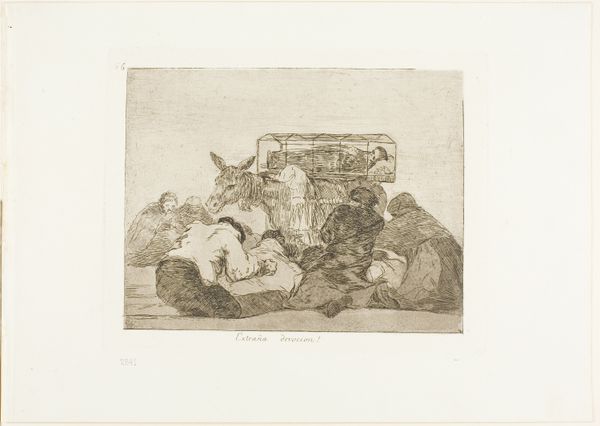
print, etching, paper
# print
#
etching
#
paper
#
geometric
#
modernism
Dimensions: height 500 mm, width 468 mm, height 253 mm, width 308 mm
Copyright: Rijks Museum: Open Domain
Editor: This is "Stilleven I," a 1973 etching on paper by Lau Heidendael. It's a pretty classical still life arrangement, but something about the sharp angles and the dark hatching feels… uneasy. What do you see in this piece? Curator: Uneasy, you say? I love that. It's as though Heidendael is turning the mundane – bottles, fabric, the very idea of a still life – into something almost confrontational. This isn’t your grandmother's serene Dutch Golden Age. Look how the geometric forms clash, and that intense cross-hatching almost vibrates. I'm compelled to lean in, to decode its secrets. Editor: So it's about more than just showing a few objects? Curator: Absolutely! Heidendael, working within the Modernist aesthetic, uses this traditional form to explore tensions between representation and abstraction, order and chaos. Don’t you feel the dynamism bubbling beneath the surface of this "still life?" The piece hums. Plus, as an etching, it bears the marks of the artist's hand in every line – a very direct link, almost intimate. Editor: I do see that now. It feels less like a calm observation and more like a… statement? Like, "Look at what I can do with light and shadow and some old bottles!" Curator: Exactly! And that's what makes it exciting. It challenges us to reconsider our assumptions about still life and even art itself. It's asking, “Can beauty exist within disquiet?" And perhaps, “Should art make you feel comfortable, or make you think?" Editor: I think I’m starting to lean toward the "make you think" camp, at least with this piece. Thanks, I’m seeing this etching with fresh eyes now. Curator: And that, my dear, is the beauty of art – and conversation! It makes the world richer.
Comments
No comments
Be the first to comment and join the conversation on the ultimate creative platform.

